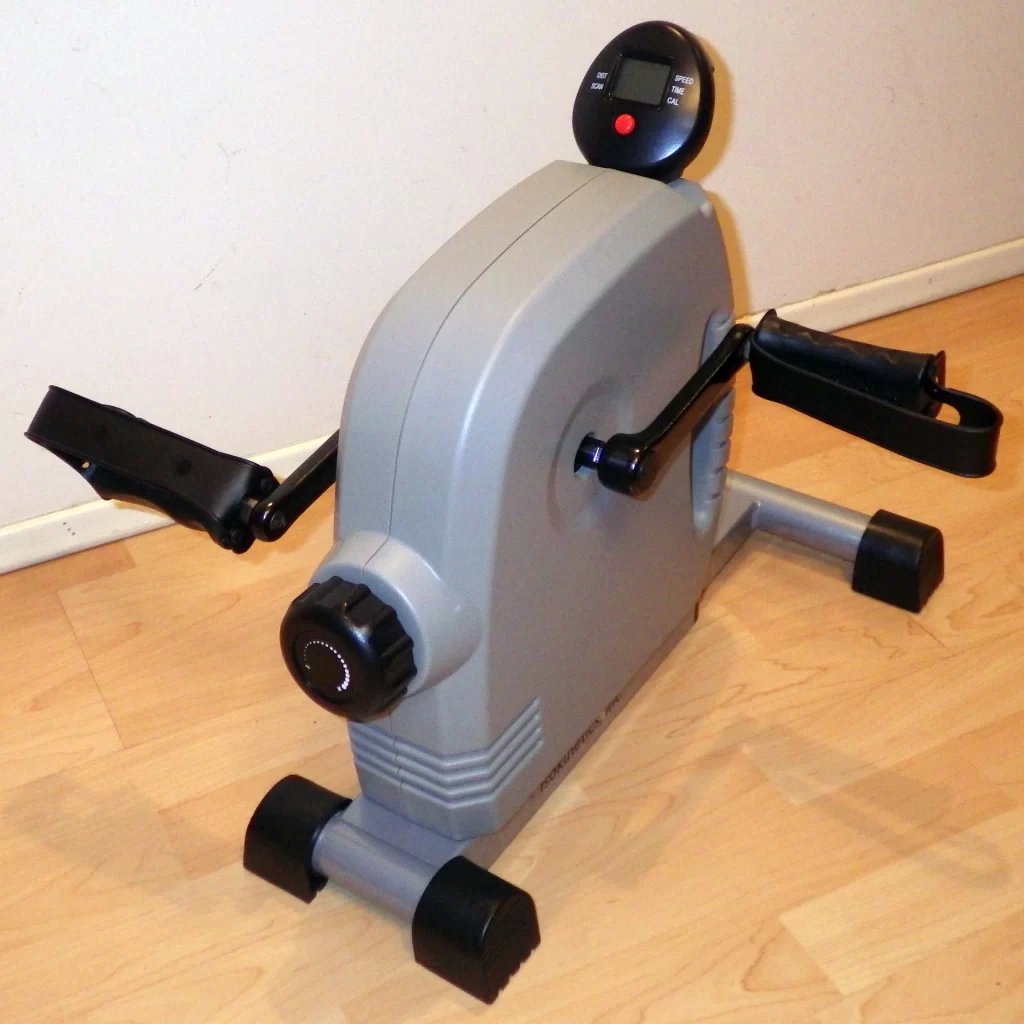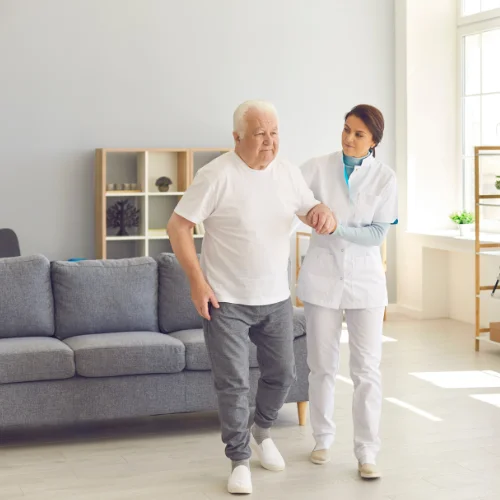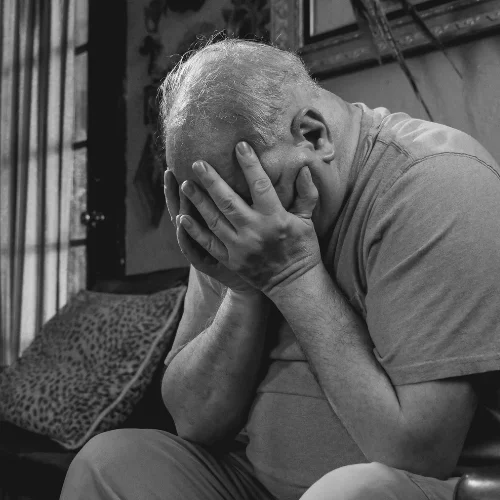Pedal Exerciser Pros and Cons: Stay Active with Ease!
Are you looking for a simple and effective way to keep your loved ones active and healthy without leaving the comfort of their home? Well, look no further! Today, we’re diving deep into the world of pedal exercisers – those nifty devices that can help seniors and people with limited mobility stay active. In this blog post, I will share the pros and cons of using pedal exercisers, so you can make an informed decision and keep your loved ones moving and grooving!
What’s a Pedal Exerciser?

First things first, let’s get to know our star player – the pedal exerciser. Imagine a compact, lightweight, and portable exercise machine that you can use while sitting comfortably on a chair or even lying on a couch. That’s a pedal exerciser in a nutshell! It comes with pedals attached to a small frame, and all you have to do is use your feet to pedal away. Some models also allow you to use your hands, offering a versatile workout for the upper body.
The Pros of Pedal Exercisers
Now that we know what they are, let’s talk about why pedal exercisers are gaining popularity among caregivers and their loved ones.
1. Convenient and Space-Saving
One of the biggest advantages of pedal exercisers is their convenience and space-saving design. They are small enough to fit under a desk or in the corner of a room, making them ideal for any home, even if space is limited. You can easily store them away when not in use, which is perfect for clutter-free living.
2. Low Impact, Joint-Friendly Exercise
Seniors and individuals with limited mobility often struggle with high-impact exercises that put stress on their joints. Pedal exercisers offer a low-impact workout, putting less strain on the knees, ankles, and hips. It’s a fantastic option for those recovering from injuries or dealing with arthritis.
3. Cardiovascular Health
Believe it or not, pedaling away on a stationary bike can do wonders for cardiovascular health. Regular use of a pedal exerciser gets the heart pumping and blood flowing, promoting better heart health and reducing the risk of heart-related issues.
4. Leg and Arm Strength

Pedal exercisers work wonders for building leg and arm strength. With each pedal or push, you engage your leg and arm muscles, helping to tone and strengthen them over time. Plus, stronger limbs make everyday activities much more manageable.
5. Physical Therapy and Rehabilitation

Pedal exercisers are often used in physical therapy and rehabilitation settings. They provide a controlled and gradual way to regain strength and mobility after an injury or surgery. The low impact nature of these devices is gentle on healing muscles, making them an excellent tool for recovery.
The Cons of Pedal Exercisers
As with any exercise equipment, there are some downsides to using pedal exercisers that you should consider.
1. Limited Upper Body Workout
While pedal exercisers do offer some upper body workout potential, they are primarily focused on the legs. If you’re looking for a more comprehensive full-body workout, you may need to supplement with other exercises or equipment.
2. Potential for Overuse
As with any exercise routine, it’s essential to avoid overuse injuries. Overdoing it on the pedal exerciser can strain muscles or joints, especially for those with pre-existing conditions. It’s crucial to start slowly and gradually increase the intensity and duration of the workout.
3. Boredom and Motivation

Pedaling away in the same spot can become monotonous over time, which may lead to reduced motivation. To combat this, encourage your loved ones to vary their workout routine, listen to music, or watch their favorite show while pedaling.
Choosing the Right Pedal Exerciser
Now that we’ve covered the pros and cons, let’s discuss how to pick the perfect pedal exerciser for your loved ones.
1. Adjustable Resistance
Look for a pedal exerciser with adjustable resistance levels. This feature allows users to customize the intensity of their workout based on their fitness level and goals.
2. Digital Display
A pedal exerciser with a digital display is handy for tracking progress. It can show workout duration, distance covered, and even calories burned, giving users a sense of achievement and motivation to keep going.
3. Sturdiness and Stability
Check the stability and sturdiness of the pedal exerciser. You want one that stays firmly in place while in use and won’t wobble or tip over.
4. Portability
If your loved ones like to move around the house, a portable pedal exerciser with a carry handle can be a game-changer. They can easily take it from one room to another, ensuring they never miss a workout.
Encouraging Your Loved Ones to Use Pedal Exercisers
Alright, you’ve got the pedal exerciser, and now it’s time to motivate your loved ones to use it regularly. Here are some tips to keep them engaged and excited:
1. Set Achievable Goals

Help your loved ones set realistic and achievable goals. Whether it’s increasing pedal time gradually or reaching a specific distance, having goals will give them a sense of purpose.
2. Make It Fun
Encourage your loved ones to make their pedal exercise routine enjoyable. They can listen to their favorite music, catch up on podcasts, or even invite a friend or family member to join them for some company.
3. Keep It Consistent
Consistency is key to seeing results. Create a schedule for their pedal sessions and encourage them to stick to it. Consistent workouts will soon become a habit, making it easier to maintain.
What does the reseach say?
In this study, researchers wanted to find out if using pedal exercisers (those little exercise bikes for your feet) could help older people who were in the hospital become more active. They were interested in whether these pedal exercises could make the patients’ leg muscles stronger, help them move better, and get them to be more physically active.
Here’s what they did:
1. They had 50 participants who were 65 years old or older and were able to use the pedal exercisers. These participants were staying in a hospital in the UK.
2. They divided these participants into two groups. One group used the pedal exercisers for 5 minutes, three times a day, with just a little bit of supervision. The other group received standard care, which means they didn’t do the pedal exercises.
3. They collected data after 7 days or when the participants were discharged from the hospital, whichever came first. This data included whether the participants actually did the exercises, whether their leg muscles got stronger, how well they could move, and how much time they spent being physically active.
Here’s what they found:
1. The two groups of participants were similar in the beginning, so there were no big differences between them.
2. People in the group that used the pedal exercisers didn’t do the exercises as much as they were supposed to. On average, they only pedaled for 5 minutes during the whole study.
3. There were no significant differences in how much their leg muscles got stronger, how well they could move, or how active they were between the two groups.
In simple words, the study showed that having older people in the hospital use pedal exercisers without much supervision didn’t really make them more physically active or improve their leg muscles or mobility.
So, the researchers concluded that just doing these exercises by themselves might not be a good way to help older patients in the hospital become more active. They suggested that these exercises could be part of a bigger plan to help people stay active while they’re in the hospital.
Conclusion
And there you have it, caregivers! Pedal exercisers are a fantastic option for keeping your loved ones active and healthy, especially if they have limited mobility. With their convenient design, low-impact benefits, and potential for improved cardiovascular health and strength, pedal exercisers are a win-win. Just be mindful of the limitations and ensure your loved ones use them safely and effectively.
So, what do you think? Have you or your loved ones tried pedal exercisers? I’d love to hear your experiences and tips in the comments section below. Let’s keep the conversation going!
